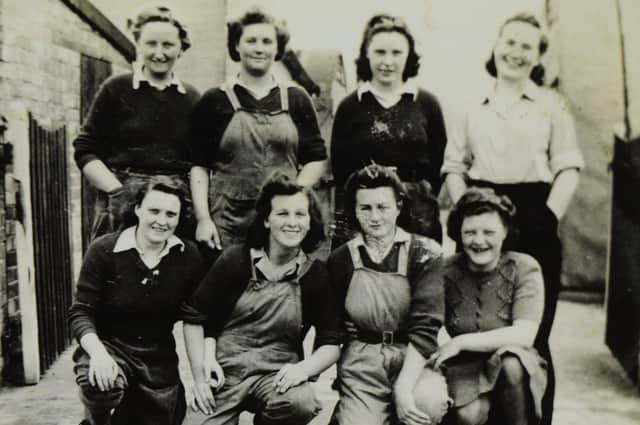Wetherby’s role in WWII Lumberjills


The Royal Ordinance Factory at Thorp Arch was a training base for the Women’s Timber Corp, a branch of the Women’s Land Army, which started in April 1942.
As many as 15-18,000 young women, aged 17-24, left home for the first time to fell trees with an axe and saw for the war effort.
Advertisement
Hide AdAdvertisement
Hide AdAuthor Joanna Foat spent two years interviewing 60 of these women for her book Lumberjills Britain’s Forgotten Army, published by The History Press in 2019.
Joanna said: “I was shocked to discover how the women were treated at the beginning of the war.
“They were laughed at for their enthusiasm to offer their services, regarded as ornamental rather than useful and many timber merchants did not want women taking over the jobs of skilled men.
“In fact, the Lumberjills not only pioneered a new fashion for women in trousers, wearing jodphurs, but they also proved that women could carry logs like weight-lifters, work in dangerous sawmills, drive huge timber trucks and calculate timber production figures on which the government depended during wartime.
Advertisement
Hide AdAdvertisement
Hide Ad“With their 80th anniversary, I hope to inspire women of all ages with the strength, courage and determination of the Lumberjills.
“Out in the forests away from the restrictions imposed on women by society, they realised they could sit astride a tree, smoke a pipe and fell ten tonne trees just like the men, if they wanted to.”
Lumberjill Edna Holland (nee Lloyd) was from Doncaster and worked in the woollen mills as a spinner before the war, but ended up training near Wetherby after joining the Timber Corps in October 1942.
“I joined when I was 17 and a half because at that age you could go where you wanted to go, at 18 they decided for you,” said Edna.
Advertisement
Hide AdAdvertisement
Hide Ad“They wanted people who were good at maths to measure the pit props for the coal mines and I had been very good at maths so that is what I decided to do.”
She trained in Thorp Arch like many others in the Royal Ordinance Factory Hostel at Wetherby.
She worked in felling, haulage using horses and driving caterpillar tractors at Dalby, Boltby, South Wood and other forests in the North York Moors, North Yorkshire.
Edna had to teach herself how to maintain and drive a Caterpillar tractor and load up.
Advertisement
Hide AdAdvertisement
Hide Ad“We were taught how to load them up onto the lorries, being taught how to pick them up in twos and throw them onto the lorry.
“Then from there we would go in the lorry to the station and throw them onto the station wagons.
“My goodness we got muscles everywhere, but it made us feel really good.”
The government at first refused to employ ‘the fairer sex,’ who they thought would be unable to cope with the tough work.
Advertisement
Hide AdAdvertisement
Hide AdBut thousands of members of the Women’s Land Army wanted to do their bit for the war like their brothers and the government’s position became untenable.
Britain was the largest timber importing nation in the world in 1939, importing 96 per cent of its wood.
With the advent of war, home grown timber supplies became vital.
Britain needed to produce millions of tonnes of wood for pit props, railway sleepers, telegraph poles, gun butts, ships, aircraft, as well as packaging boxes for bombs and army supplies. Thousands of forestry workers were urgently required.
Advertisement
Hide AdAdvertisement
Hide AdJoanna added: “Many of the lumberjills I met were still upset that they remained a footnote in history, so I wanted to make sure they were remembered.
“Now their incredible feats of physical and mental endurance inspire women today, especially female forestry workers and arborists from across the world.
“Given the freedom and opportunity to work together in sisterhood out in the forest, naturally the lumberjills were a huge success.”